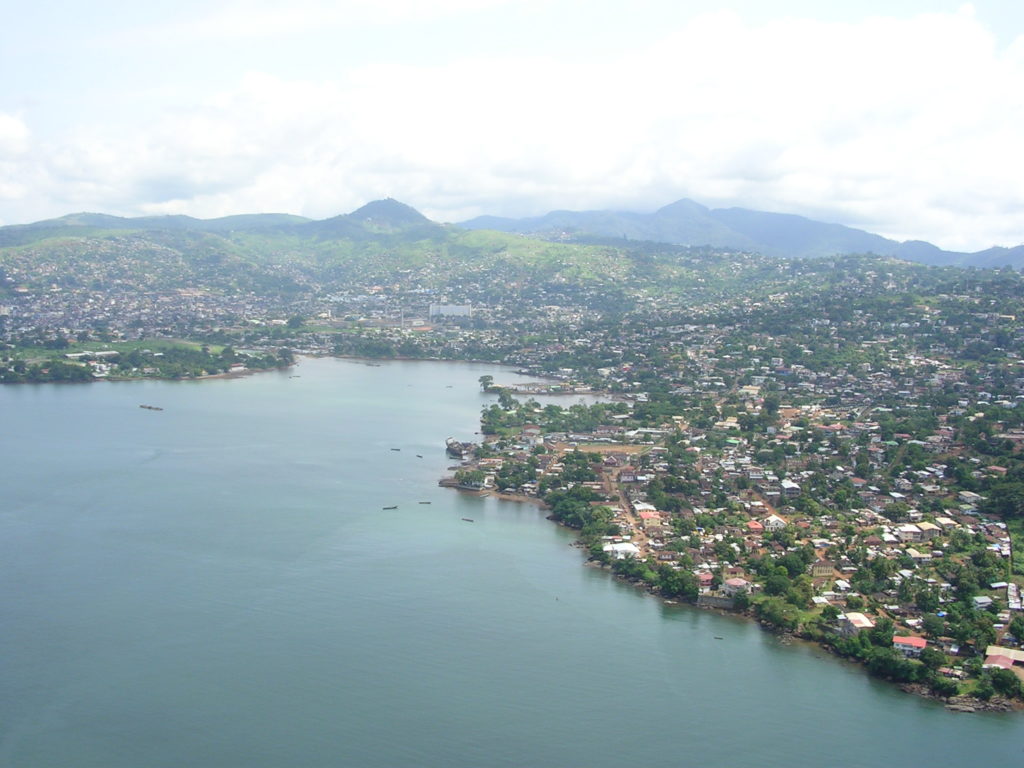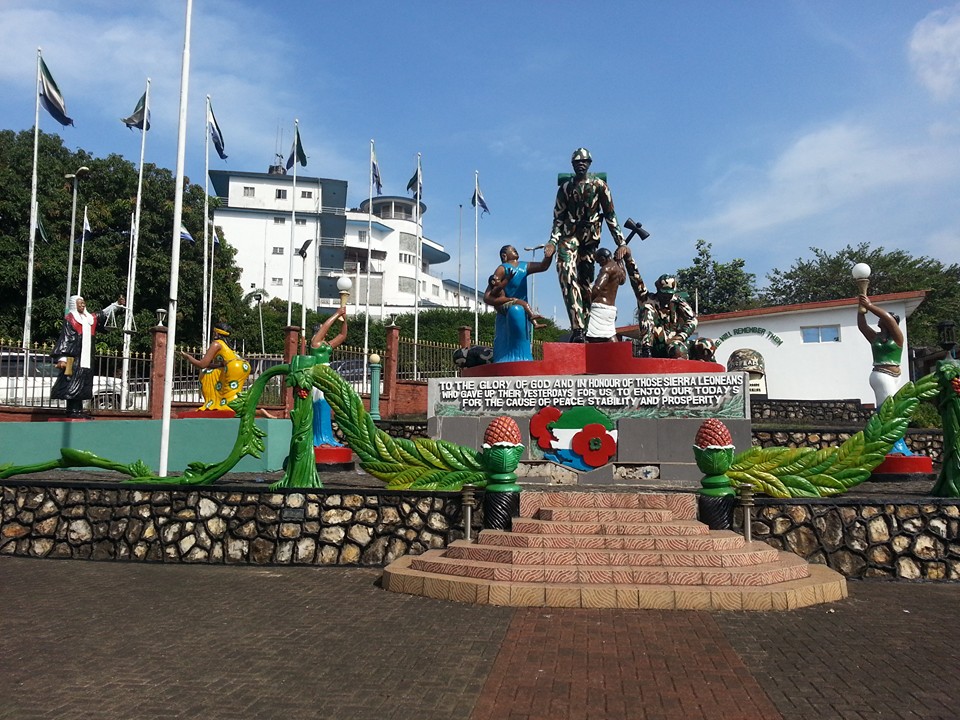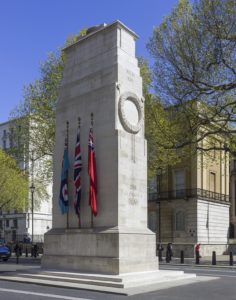
The Sierra Leone Peace and Cultural Monument, part of the Sierra Leone Peace Museum, was created in the centre of Freetown in 2011, as the first major memorial to the Sierra Leonean Civil War which had ended in 2002. It takes the form of an eclectic sculpture garden, including martial imagery, texts of prayers, testimonies from survivors of the conflict, messages of reconciliation, western remembrance-derived imagery such as poppies, and figures from Sierra Leone’s past, both historic and folkloric.

The monument is of particular interest because of how it has developed over time. When the artwork was first created, following the Sierra Leone Truth and Reconciliation Commission’s recommendation for the creation of memorials to the conflict as a form of peacebuilding, it was explicitly a war memorial, and named the ‘Monument in Remembrance of Our Fallen Heroes and Heroines’. A year later, it was re-opened with its current title, and its content reflects both its original role in memorialising the military and the simultaneous desire to create a national narrative of peace for Sierra Leone. Paul Basu argues that the sculpture is now simultaneously peace monument and war memorial; it is self-contradictory, but its self-contradiction honestly reflects the contradictions in Sierra Leone’s narratives of the war and of national identity. Basu considers it in terms of ‘postcolonial pastiche’,[1] an aesthetic tradition in postcolonial nations which embraces excess and multiplicity as a means of working through the complex legacies of empire and of past conflict.

The memorial makes a fascinating comparison with the ubiquitous memorials of the United Kingdom. Aesthetically it provides a stark contrast with the austerity and simplicity characteristic of British war memorials. We might ask ourselves what different narratives these different aesthetics reflect. The presence of the poppy motif in the Sierra Leone Peace and Cultural Monument as a legacy of empire should also make us ask what our own narratives and monuments of past conflict leave out.
In recent years, projects such as Gethin Matthew’s research on Welsh Memorials to the Great War, which you can read about here, have started to think critically about habits of memorialisation in this way. If Britain continues to re-evaluate its own public memorials and their role in creating a national narrative, it will be vital to take account of different approaches to memorialisation such as The Sierra Leone Peace and Cultural Monument.
What do you think?
- What is the purpose of a war memorial?
- Does the Sierra Leone Peace and Cultural Monument fulfil this purpose more or less effectively than the memorials you are familiar with?
- Does the Sierra Leone Peace and Cultural Monument change your idea of what a war memorial might be?
- What images/aesthetics do you associate with war memorials, and why?
- To what extent should war memorials look back to the past and/or forward to the future?
- What role can or should war memorials play in nurturing peace? And how best can they do this?
- Should public monuments reflect multiple narratives? How can this best be achieved?
If you enjoyed this item in our museum…
You might also like ‘Fractured Peace‘, ‘Valentino’s Peace Dress‘, ‘Moral Injury‘ and items with the tag ‘Reconciliation‘.
Further Reading
Sierra Leone TRC – Sierra Leone Peace Museum Memorial Contributions Image Gallery: this is the website of the Sierra Leone Truth and Reconciliation Commission – on this page, you can see submissions to the original competition to design the memorial.
https://www.jstor.org/stable/43307393: this is an extensive analysis of the monument, authored by Paul Basu.
Welsh Memorials to the Great War – Swansea Research Website: this is the website of Gethin Matthews’ project on war memorials in Wales.
[1] Basu, Paul. “Recasting the National Narrative: Postcolonial Pastiche and the New Sierra Leone Peace and Cultural Monument.” African Arts 46, no. 3 (2013): 10–25. http://www.jstor.org/stable/43307393.
Image: Freetown From the Air by David Hond.